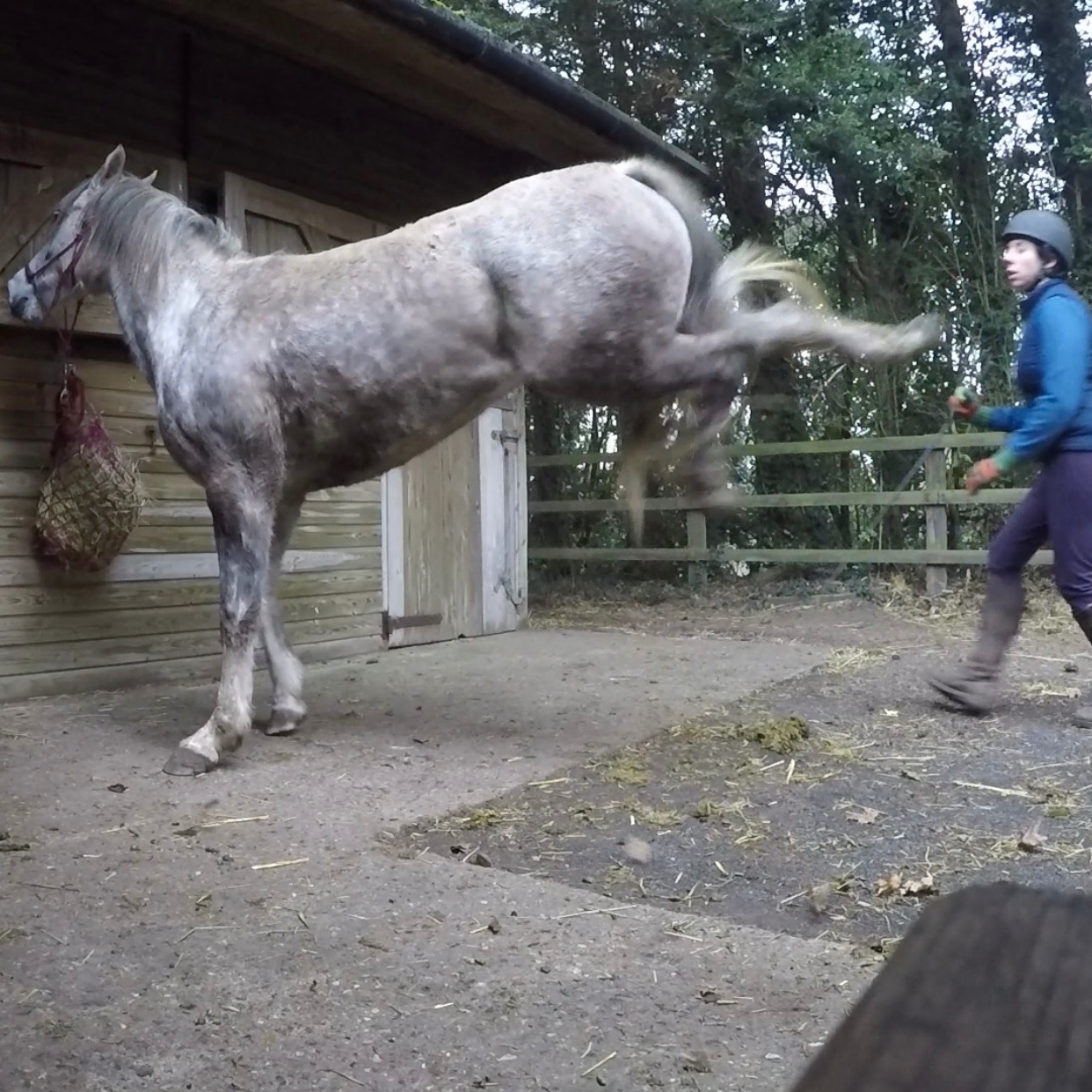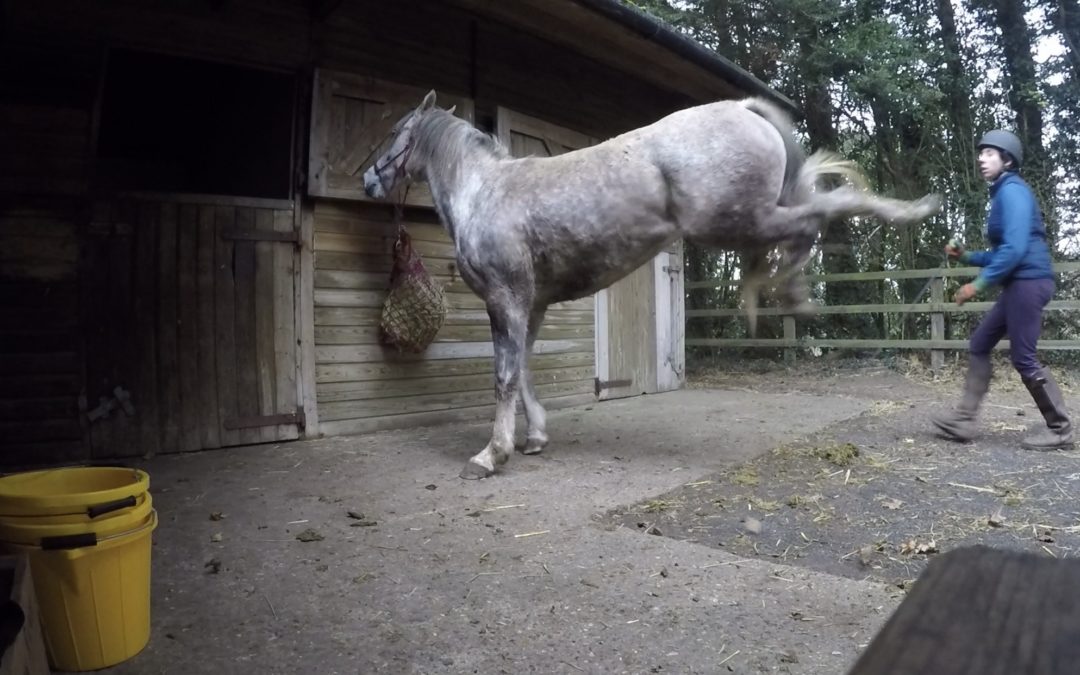It isn’t all “playing ponies”. The reality is that I work with many horses and ponies who need some guidance. (They aren’t all angels!) My mentor, Theresa, always reminds me that I must “pay my dues” on my way to becoming a good, well rounded horse trainer. So, for now, I will take every horse I meet, however challenging, as a blessing in disguise.



Part of what I offer as a trainer, is a full assessment of the horse and tack. This includes looking at and teaching the owner how to see the symmetry of their horse. We are able to establish which muscle groups need strengthening or building up and if any imbalance is contributing to unwanted behaviours, usually due to discomfort and/or weaknesses in the body.
From time to time, I need to call in the assistance of other equine professionals, whether it be an osteopath, a farrier, a vet or even my own mentor, as a second pair of eyes.
When I bought my new horse, Luna, I was looking forward to a project. I was expecting to train an inexperienced, older horse. I knew there would be some challenges ahead, but ultimately, I was looking forward to backing her in the New Year. Upon arrival, it was clear that Luna hadn’t been handled much, just as expected. As my ground training commenced, she began displaying more extreme behaviours; kicking out with intent, squealing, barging and head tossing. As with all of the horses I see, I did my checks for any discomfort and I had no concerns. I have found that Luna is a typical “green” horse on the right side of her body and it is becoming more apparent that she is unhappy on the left, not unlike horses I have trained with trauma. As little is known of her past, other than being turned out in pasture for the whole of her life, all I can do for her is to start over, slowly, considerately and to listen to what she tellls me. I must not assume that she will take to any part of the training without any issues.
One of the most important pieces of training, in my opinion, is handling the horse’s legs safely. Whether it is just for hoof care, or in an emergency, every horse should be able to pick up their feet calmly and without distress. Not only does it make our lives easier, but it is fair for the horse.
Picking up Luna’s feet has been a challenge from the offset! I have been met with explosive reactions! In the beginning I would try just touching her all down the legs and let her know everything is ok. However, whilst doing so, quite sporadically, she would try to kick out, barge past me to get away or lean her body weight into me until one of us would stumble! Every time we took steps forward, inevitably, we would regress; Luna is just too fearful of losing her back legs.
Recently, I called for assistance by Luca Palmer. Luca is not just an exceptional farrier, but his passion for horses and desire to learn more is infectious! As the farrier I recommend to all students, I consider Luca as part of my Sense Equine team – never as much as on that Tuesday morning he came to help out!
With two people, we were able to show Luna there is nothing to worry about and that offering her feet would not cause her harm.
30 minutes from the beginning of the session to the end, we went from dealing with a barging, kicking, squealing mare, to a “good citizen” who is well on the way in this part of her groundwork.
What we did –
One person was required to steady the horse, to give calming cues and praise whilst the other picked up the hind leg. During the exercise, you can see Luca standing with his feet by the front feet of the horse, whilst reaching for the hind. This is a method taught to help prevent being in the “kick zone” with nervous or difficult horses.
Previously, I had tried asking Luna to offer her leg with a touch, but she was evidently too nervous. By having an extra pair of hands, I was able to hold her leg until she released tension. This will ensure a much more relaxed horse with each time she gives me her leg. Once she was successfully offering her leg, Luca used a rasp to imitate a normal trim. This is where we ended the session, with a much calmer horse.
I left Luna for a few days between the session with Luca and the clip above. When I asked her for her feet she was alot calmer than previously.
This was the first time she trusted enough to offer her foot. For 20 minutes we worked on relaxing together. She anticipates me asking for her foot, which is ok, but I asked her to relax and release every time she did. When she picked up her hind foot when I asked, I would hold and release as soon as she was calm. This particular session was all about releasing tension through her hind and showing her compassion.
Fast forward a week!
Luna is now ground tying and offering all feet quietly. She still has some tension when having her hind legs touched and feet picked up, but that is ok. We are working on this!
This wasn’t a “bish, bash, bosh” job! We took things slowly and worked on this one step at a time (pun intended!) I wanted to make sure she was calm and quiet before asking for more. As we weren’t in a rush we did not pile on tons of pressure, which I believe is a much nicer approach to any training.
With cases like Luna, difficult horses who express alot of negative energy, we always look to train up to the limit but never exceeding it. Sometimes this “limit” can be as little as standing calmly or bringing down energy. When training is carried out we never overstimulate the horse on purpose, but we also do not finish until the time is right. The horse is the one who lets us know. From time to time, training in the beginning can look “ugly” and/or very boring/stupefied and finding that limit can mean reassessing the situation depending on the individual and the horse. It is important to provide another way if required and to make sure everything ends on a good note for the horse and the handler.
